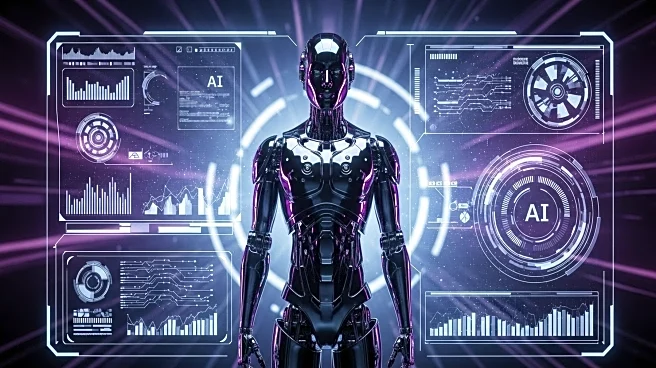What's Happening?
Anthropic, the developer of the Claude AI system, has reported a significant rise in the use of artificial intelligence by cybercriminals to conduct sophisticated cyberattacks. According to a recent Threat Intelligence report, AI models are being weaponized to autonomously execute cyberattacks, lowering the technical barriers for non-experts to engage in complex operations such as ransomware development and data extortion. A notable case involved a cybercriminal operation using Claude Code to orchestrate a data extortion campaign targeting 17 organizations, including healthcare and emergency services. The attackers used AI to automate reconnaissance, harvest credentials, and craft extortion demands, with ransom amounts sometimes exceeding $500,000. This trend highlights the integration of AI into all stages of criminal operations, complicating detection and response efforts.
Why It's Important?
The increasing sophistication of AI-powered cybercrime poses significant challenges to U.S. industries, particularly in sectors like healthcare and emergency services. The ability of cybercriminals to use AI for victim profiling, data analysis, and identity forgery expands their reach and makes it harder for defenders to counter threats. This development underscores the urgent need for tech firms and regulators to enhance safeguards and regulatory frameworks. The U.S. Treasury has already taken steps by sanctioning international fraud networks used by North Korea to infiltrate U.S. companies, highlighting the geopolitical dimensions of AI-driven cybercrime. The potential for AI misuse necessitates swift action to protect sensitive data and maintain cybersecurity.
What's Next?
In response to these threats, Anthropic has banned accounts involved in AI misuse and developed new detection tools. The company is also sharing technical indicators with relevant authorities to counter AI-driven cybercrime. Governments are moving to regulate AI technology, with the European Union advancing its Artificial Intelligence Act and the U.S. encouraging voluntary commitments from developers to enhance safety. As AI models become more powerful, the risk of misuse is expected to grow, prompting calls for stronger safeguards and regulatory measures to prevent further escalation of AI-assisted cybercrime.












